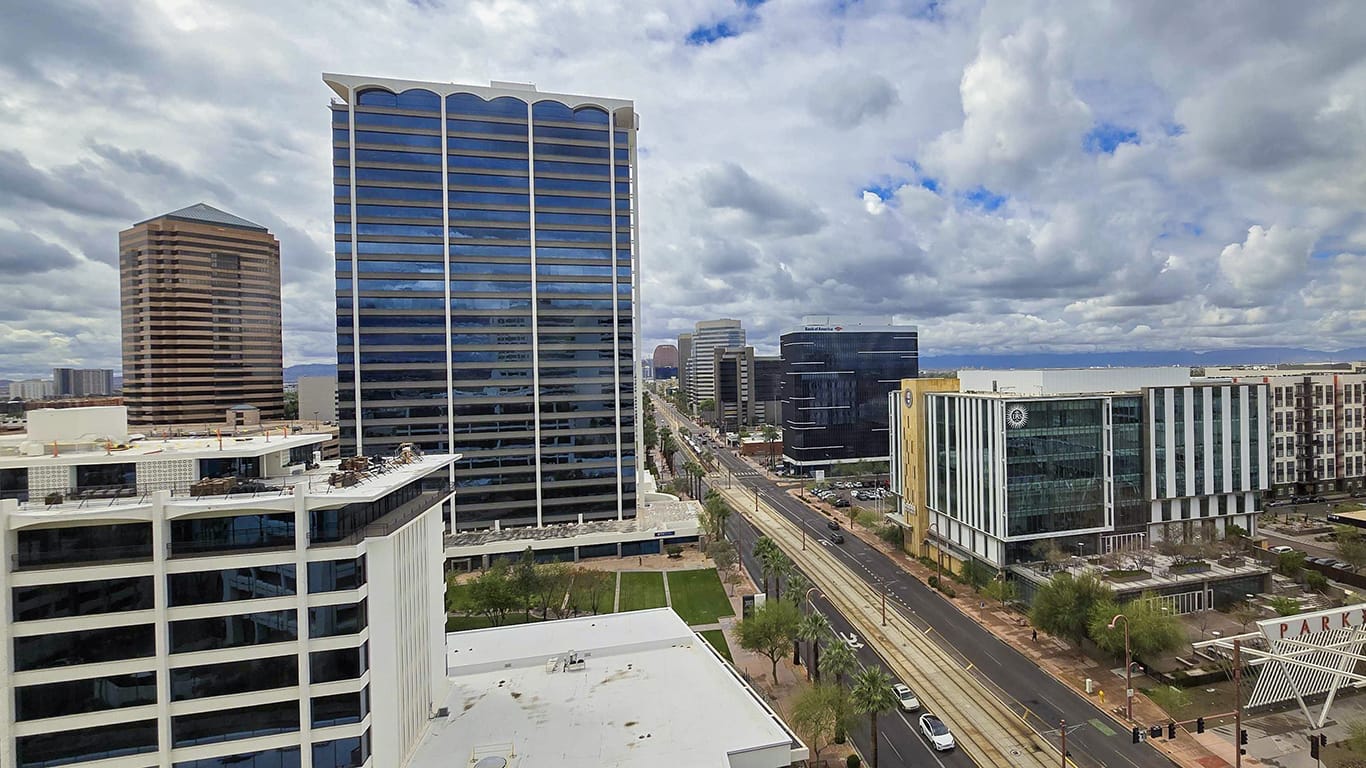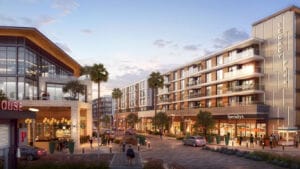Offices are seen as a place where companies can house their employees and headquarter their operations. It has been a staple of company infrastructure since the creation of the first skyscrapers. Now, they’re being left vacant, resulting in developers considering ways to re-invigorate space. And the office-to-apartment conversion trend is impacting Metro Phoenix in a big way.
MORE NEWS: How redevelopment strategy created a dynamic Downtown Phoenix
Before the start of the COVID-19 pandemic in 2020, the office vacancy rate in the U.S. was 13% in the first quarter of 2019, according to a Cushman & Wakefield report. In the first quarter of 2023, Cushman & Wakefield reported a national office vacancy rate of more than 18%. In terms of net absorption in the national office market, the first quarter of 2019 saw a positive net absorption of 6.7 million square feet. In the first quarter of 2023, that number plummeted, reaching a negative value of more than 20 million square feet.
In Phoenix, the numbers follow the national trends. In the first quarter of 2019, the Phoenix office market reported a 15.4% vacancy rate and a positive net absorption of over 268,000 square feet. In the first quarter of 2023, Phoenix’s office vacancy rate increased to 25% and had a negative net absorption of 970,000 square feet. The most recent report from the fourth quarter of 2023 shows that the city’s vacancy rate rose to 27.4%. Net absorption remained negative at over 185,000 square feet, an improvement.
To add on, office workers are choosing to work from home, taking advantage of remote work policies in the post-pandemic period. According to the U.S. Census Bureau, 27.6 million people worked from home in 2021. In contrast, around 9 million people worked from home in 2019. It looked like millions of square feet of office space were going to remain vacant until developers saw a possible solution: conversion into residential.
The considerations and challenges
Major American cities like San Francisco, New York City and Washington, D.C. are hubs where office-to-residential conversion projects are taking place. Phoenix is considering adding itself to that list, but there is a long road ahead before that happens.
“I call it a fledgling initiative,” Phil Breidenbach, senior executive vice president with Colliers, says. “As certain segments of the office market deteriorate, and it becomes tougher and tougher to find quality residential places to occupy, there’s a lot of interest there.”
While office-to-residential conversion is becoming a topic of discussion within Phoenix, Breidenbach outlines several challenges that must be addressed first before projects begin.
The size of the office must be assessed. There is a difference between a suburban two-story “garden office space” — something that can be easily torn down and replaced — and a mid- to high-rise building, Breidenbach says. “The conversion of those [mid- to high-rise] buildings to residential is super expensive, so you got to get the building really cheap.”
He also says that construction costs are a big factor when considering these types of projects. “My opinion is that there’s going to have to be a little bit more downward pressure on office building values,” he says, “and at the same time there’s going to have to be continued upward pressure on rents to make it make sense.” Breidenbach goes on to say that infrastructure — floor plans, plumbing and parking — must be part of the discussion, too.
For Chris Hock, owner and president of Colorado-based Earth Saving Solutions, office-to-residential conversion projects make sense, even with the difficulties and challenges, because of the potential and the country’s need for housing. “You have an opportunity as a contractor, as a developer, to turn something that is way below the going rate and turn it into something that you can get really good money for.” He adds that this is the only thing that makes sense because “of this [housing] deficit that we have. We have too many people here that need homes.”
Success and failure
While office-to-residential is a hot-button topic today, Phoenix already has some examples of both successful and unsuccessful office-to-apartment conversion projects.
Let’s start with the successful conversions. One Lexington — previously known as Century Plaza — was a former office tower which was converted into a luxury condominium building. Initially built in 1974, the 17-story tower underwent conversion in the 2000s, finally opening to the public in 2010. The structure has 146 units, offering a mix of 1-, 2- and 3-bedroom condos. Another example is not a conversion into residential units, but is still considered a successful conversion. The Luhrs Building — a 10-story tower in the heart of Downtown Phoenix — was previously an office building before being converted into the 164-room Moxy hotel.
One of the most well-known office-to-residential conversion failures is One Camelback. The 11-story structure used to be the BMO Harris bank tower. Having over 215,000 square feet of space, the property was going to be converted into a luxury apartment complex, housing 163 units of studio, 1-, 2- and 3-bedroom apartments. Work on the conversion project began in 2019 with high expectations. After the property owner defaulted on its $71.3 million loan, however, the structure still remains empty.
“That was originally thought to be a great opportunity to make a conversion to residential,” Breidenbach says. “It was an abject failure.”
As office-to-residential projects take place across the country, Phoenix is contemplating whether to join the trend. While stories like the One Lexington and the Luhrs Building showcase the possibilities of conversion, One Camelback serves as a warning to what can happen when projects are delayed.
Lev Libeskind, architect at Libeskind Studio Design, states that conversion projects are still something worthwhile. “At Libeskind Studio Design, we view office-to-residential conversion projects as not only feasible but also as an unprecedented opportunity to transform communities,” he says. “These initiatives allow developers and neighborhoods to breathe new life into existing structures, turning them into vibrant living spaces.” He cites the work being done in Brooklyn and New York City and how these projects are more sustainable than ground-up construction.
What’s next for office-to-apartment conversion
As developers continue to mull the idea of office-to-residential conversion projects, Phoenix looks to become the next city that adopts the practice. Nevertheless, Breidenbach has a piece of advice for those who want to engage in the endeavor: “It’s certainly a labor of love. That may be the biggest impediment to redevelopment of office buildings: To do it right, you need the best, brightest and most well-capitalized developers in our marketplace to pull this work off.”




